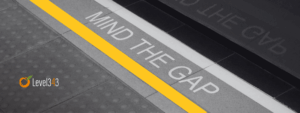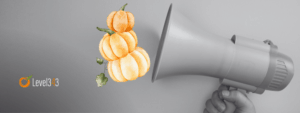On-page SEO is one of the most important parts of online marketing. Done properly, it can help with better ranking, a higher click through rate from the SERPs, and a higher conversion rate on the page. But what is on-page SEO, and how does it have such weight in the marketing world?
On-Page Search Engine Optimization (SEO)
What is your page about? What is the topic? On the main, on-page optimization 1) answers this question and 2) makes sure that you stick to it.
In short, the practice of on-page SEO is to optimize individual web pages so they perform optimally. As mentioned in the opening, it can help a page (or pages, or the site) with search engine rankings, but also with additional organic traffic, increased authority, and stronger on-page conversions.
On-page can be performed on pages on your website, on a blog post, or on your entire site. It’s distinctly different from off-page SEO, which includes actions such as link building, in that you have absolute control over what goes on the page.
You Can Over-Optimize
On-page involves breaking a single page down into several areas. Those areas are diagnosed with a magnifying glass and then updated for the best possible outcome.
No matter what industry you’re in, standing out from your competitors can be difficult. This is especially true in the realm of digital content creation, where you might have hundreds or thousands of competitors. This is the very reason we use the best practice concepts of search engine optimization – to, hopefully – pad the deck in our favor.
It’s a fine line between optimization and ruining your page, however. Too many times, publishers have stuffed keywords, copied and pasted content all over their site rather than having unique content, or even taken text from other sites in the hopes of ranking high in the search engine results pages.
Unfortunately, such tactics can cause a whole passel of negative consequences, not the least of which is being found out and ruining your reputation. Remember: each page has the potential to be a landing page. This also means that each page can be the first time a visitor gains an impression of your site, your business, and your integrity.
SEO is a gentle art, not a full-contact sport. If you find yourself thinking words like, “cram”, “stuff”, or other violent words in respects to what you’re doing with keywords, for instance, you’re doing it wrong. Finesse, people; finesse!
As you go through the sections below, think of how you can walk the fine line between targeting your visitors and an excellent user experience, while still ranking well in the search engines.
Understanding Search Behavior
Why are your visitors searching for the terms you’re looking at? One of my favorite examples to point out what I’m trying to get to is the term “jaguar.” If you were to search for “Jaguar,” how is the search engine supposed to tell the difference between “Jaguar,” the car, and “jaguar,” the cat?
The same question can be asked about search engines ranking your pages. How are they supposed to know which “jaguar” your page is talking about?
Context is key. When you’re creating SEO content, make sure that you haven’t let out information that will help make it clear what your page is about.
Deciding Your Topic (Targeted Keywords)
The focal point of search engine optimization revolves around key terms. In fact, marketing has been using key terms since day one; way before online marketing was cool. You can still see it in the T.V. ads of today, where you hear the same phrase mentioned three times (3 is a magic marketing number).
Optimization starts with a keyword or a set of keywords, for which you’ll be optimizing your page. As an example: you sell tires, so you are going to talk about tires, so tires is your topic. -But what information are you trying to impart, and how would people search for it to find the information? The answer to this question is your targeted keyword or phrase, and it becomes the center of your optimization efforts for that page.
Use a single key term per page. In other words, don’t try to optimize a page for five key terms. If you do, you end up trying to split your content four/five ways. This creates a non-focused page rather than the optimized page you were going for. If you have more than one term you want to focus on, create another page for the second term. If the two pages are related, link to each other.
Analyzing Your Competitors
Before actually creating or updating content, you need to know what you’re up against. If you have a SEMRush account and can use the SEO Content Template, this can be a fairly quick activity. If not, you can do it manually by following the steps below:
- Go to the search engine and type in your target keyword. Check for the features available in that search. “People Also Ask” is a common one, as well as videos or images.
- Get an average of how many words are showing in the top 10. This isn’t extremely important, but it does give you an idea of how much information may need to be imparted to be considered high quality content for that page. It helps to know whether the content is short and concise, or whether it’s long form and full of information.
- Check the top 10 results for what they offer on page. Do they have an FAQ, for example? What about images, videos or infographics? Look their pages over with an eye towards how you can achieve better results and provide a more robust content offering for visitors.
Creating or Updating Your Content: The On-Page SEO Process
Once you know what you’re going to talk about, know who else is talking about it and how, it’s time to put all that research to work. While these things can be done in any order, our process is from the top down. Below are a few of our steps:
Page Speed
What causes a page to be fast or slow? Many times it’s a site wide problem, but there can also be page specific issues, such as image loading. Time and again, publishers have uploaded images larger than 2000 pixels when it displays at 300px. This increases the time to load the page, as well as the amount of data that a mobile phone would be using to build the page.
You can see how your page performs with Google Pagespeed Insights, which can give you or your developers helpful tips on how to speed up your pages.
URL Structure
If the title of your page is “Pickles and Ice Cream”, you don’t have to reinvent the wheel and come up with some fancy version for the URL. Keep your URLs short so they’re easier to remember, and make them about the topic. If you’re just creating the page instead of updating, you can use your key term to name the page. For example, the URL for this page is exactly what the title is: what-is-on-page-seo.
It will be much easier to remember and it tells both the search engines and the visitors what the page is about.
Title Tags and Meta Descriptions
Some people say that meta descriptions are now useless because search engines don’t use them anymore. To these people, I have to say, “Really? Then you haven’t been paying attention.”
Title tags and meta descriptions go into making your search snippets. This is precious real estate. Why? Because this is your first handshake with your audience, and you don’t want it to be a dead fish handshake.
Don’t leave these spots blank. If you do, the search engines will uses whatever they “feel” is relevant to the search, rather than a carefully worded piece of marketing.
If you can do so naturally, use your pages’ targeted key term early on in the title and the meta description. However, again, make sure that the term is used carefully, as you are creating an online ad for the page.
Content Creation
This is the hardest part of the whole on-page SEO process. You don’t want duplicate content, so it has to be unique, but you also don’t want to just create content for content’s sake. It needs to be helpful and serve a purpose above and beyond ranking. For help in content development, read A Guide to Creating Organic SEO Content. There is some overlap, but there’s also a lot of additional step-by-step information you’ll find helpful.
Images and Alt Text
If you use images, there are a few best practices that can make quite a bit of difference in how your page is received:
- Images should be no bigger than the necessary size. As mentioned above, if you have a 300×300 space, don’t upload a 2000×2000 picture. Only upload the size you need.
- Add alternative (alt) text to the image. Alternative text is specifically for screen readers, to help blind people understand what an image is. However, this is also used by search engines for the same reason.
- Use relevant images. Don’t choose an image just because it’s pretty. Images should be used that are on-topic with your content.
- Unless you need images that are high resolution with lots of colors, upload JPGs and optimize for compression and file size.
- Save your images with relevant file names. In other words, you shouldn’t upload an image with 234234342_shutterstock.
External and Internal Linking
It’s not required to link out to your own page or another site’s in order to rank, although there is anecdotal evidence that shows it helps. However, if you quote a site, you should at least mention it (called a citation).
There’s quite an argument about whether you should link to another site and set that link to nofollow. At Level343, we feel that, if we’re going to link to a site, it’s because we trust it enough to share with our readers. If we trust it enough to share, we trust it enough to let the search engines know we’re linking. You can make your own choice, there.
We link to our own pages first, if we have supporting content that can be helpful to our readers. Otherwise, we’ll link to additional outside sites.
Wrapping Up
So what is on-page SEO? If you look at all the points above, you’ll notice that the biggest commonality is relevance.
On-page optimization ultimately helps you keep your page on target and on topic, from the URL to the page structure and the CTAs. By doing so, it increases the visitors trust in what you’re saying, and the search engine’s ability to tell what the page is about.
It’s a necessary part of online marketing. Although the above isn’t the end all, be all of the on-page tasks, they’re a good start. For more information about optimizing your website for better traffic and ranking, contact Level343.



































